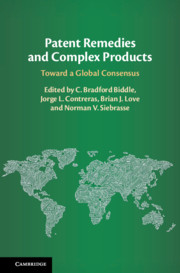It's a trademark case, but it raises an important policy question for any body of law that permits courts to award the defendant's profits as a remedy for infringement. The case is Romag Fasteners, Inc. v. Fossil, Inc., Case No. 18-1233 (U.S. June 28, 2019). The question presented is "Whether, under Section 35 of the Lanham Act, 15 U.S.C. § 1117(a),
willful infringement is a prerequisite for an award of an infringer’s
profits for a violation of Section 43(a), 15 U.S.C. § 1125(a)." Here is a link to the Scotus Blog webpage for the case, and here is a link to my previous mention of it on this blog (where I stated that "this is an important issue of federal trademark law . . . and . . . at some
point it might be useful . . . for the Supreme Court to resolve the circuit split"). I have argued before that, as a policy matter, a requirement that the defendant willfully infringed probably makes sense, in order to avoid a substantial risk of overdeterrence. As my coauthors and I have stated:
Strictly speaking, in trademark cases the defendant’s profit attributable to the infringement should be only the amount above what the defendant would have made had it used the next-best available trademark. In cases of innocent infringement, it may be fair to assume that the defendant would have made about the same profit had it chosen a different mark. When the infringement was willful, by contrast, it may be reasonable to assume that a good portion (maybe all, in the case of outright counterfeiting) of the defendant’s profit was attributable to consumers’ incorrect association of the defendant’s products with the plaintiff’s. To avoid the risk of overdeterrence, courts therefore may be wise to limit restitutionary awards to cases of willful trademark infringement, at least if they are willing to award reasonable royalties in lieu of defendant’s profits in cases involving non-willful infringement.
Barton Beebe, Thomas F. Cotter, Mark A. Lemley, Peter S. Menell & Robert P. Merges, Trademarks, Unfair Competition, and Business Torts 393 (Wolters Kluwer 2d ed. 2016) (citing Roger D. Blair & Thomas F. Cotter, Intellectual Property: Economic and Legal Dimensions of Rights and Remedies (Cambridge Univ. Press 2005)). For my thoughts on this issue in patent law, see this post from 2013 (point # 2); see also chapter 2 from Patent Remedies for Complex Products, where (at p.143) my coauthors and I argue that, in countries in which disgorgement of profits is available as a remedy for patent infringement, it should be discretionary, not a matter of right.

